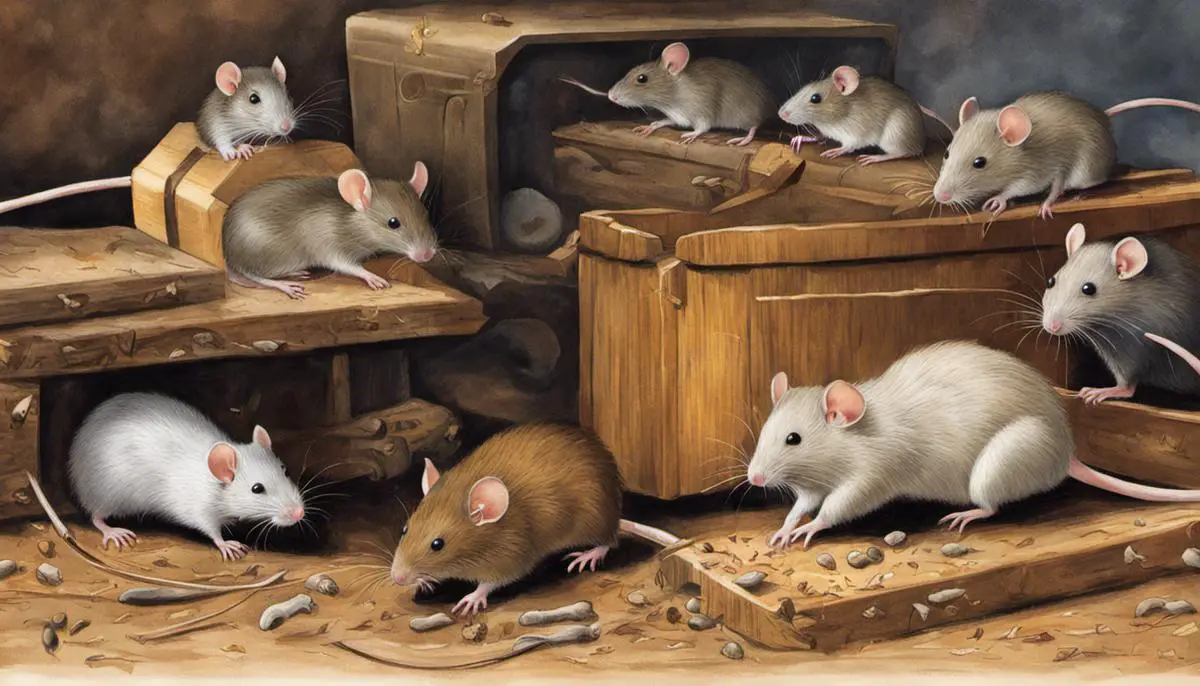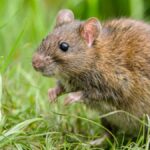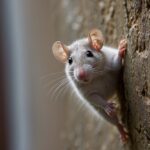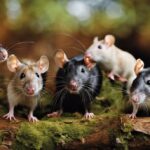Rats are not just an inconvenience; they could also cause significant harm to property and pose considerable health risks. As commonplace rodents, rats can sneak their way into homes with ease, often proving difficult to detect until they have firmly established their territories. We need, therefore, to be informed about the subtle and not-so-subtle signs of a rat infestation, allowing us to act promptly should such a situation arise.
Covering everything from the physical signs and auditory cues to behavioral patterns and the potential biological implications, the following examines top-to-bottom indicators of rat infestations. Armed with this knowledge, you’ll be better equipped to prevent rat infestations before they become overwhelmingly problematic or nudge them back out if they have infiltrated your property.
Recognizing physical signs of rat infestation
Decoding the Tangible Indications of a Rat Infestation
From the integrated lens of entomology and pest management, the exploration of rat infestations provides an enriching scientific endeavor. These often-unnoticed rodent ingressions not only pose significant health risks and property damages but also contribute to a compelling tableau of behavioral ecology and urban zoology.
To intervene effectively in a rat infestation, one must first identify the tell-tale signs of these unwelcome intruders. Observable traces of rodent activity illustrate a narrative worth decoding to understand the extent of the issue and define potential intervention strategies.
The first palpable clue to a rat infestation lies in the discovery of droppings. Characteristically longer and larger than those of their mouse counterparts, rat feces bear a cylindrical shape with rounded or blunted ends, typically measuring 1/2 to 3/4 of an inch. Recognizing rat droppings—and taking swift action—is of paramount importance, as these feces harbor pathogens capable of causing Zoonotic diseases.
Second, rat infestations also present themselves through visible gnaw marks and structural damage. Rats are avid gnawers, seeking sustenance and ways to sharpen their continuously growing incisors. Among the casualties of this voracious gnawing habit are electrical wires, plumbing, and building materials—evidencing rodent activity and warranting immediate action.
Further, the presence of rat nesting materials in secluded, warm areas is a strong indicator of infestation. These creatures fashion intricate nests from shredded paper, fabric, plant matter, and other scavenged materials. Locating such nests, especially in attic spaces or wall cavities, serves to verify the unsettling presence of these rodents.
Perhaps one of the most undeniable indications lies in rat tracks and runways. These creatures are creatures of habit, treading the same paths repeatedly, much like human footpaths worn into the landscape over time. Overuse results in discernible tracks from body oils, dirt, and fecal matter. A liberal dusting of flour or talc in suspected areas can help visualize these under-the-radar highway systems.
Lastly, noises and odors provide significant indications of rat activity. The nighttime scratching and scurrying sounds against wood or within walls may well be rats. A distinct, musky odor, particularly in areas of high rodent activity, often corroborates other signs of rat presence.
Rigorous observation and swift action are critical in tackling rat infestations, ultimately dictating whether a minor annoyance can balloon into a full-blown, costly infestation. These signs serve as the veritable warning lights on the pest control dashboard, enforcing the need to consider professional intervention and implement preventative measures.
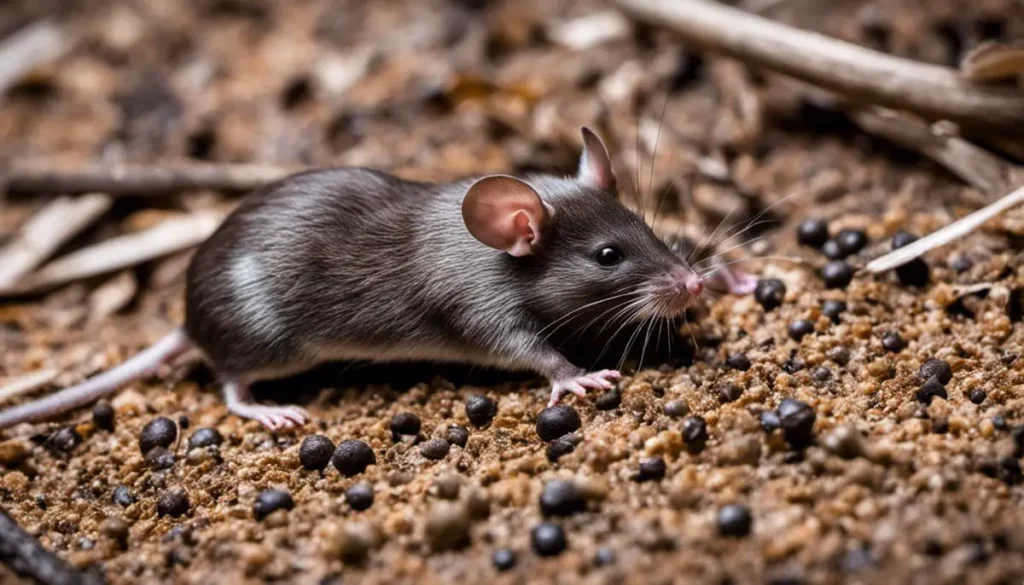
Detection of auditory cues pointing to rat infestation
The Role of Auditory Cues in Rat Infestation Detection
While commonly known signs of rat infestation include droppings and structural damage caused by gnawing, along with the presence of nesting materials or evidence of tracks and runways, a lesser explored, though no less valuable, area of focus lies in the auditory realm. Auditory cues can provide significant insights into potential rat infestations, thus allowing timely mitigation before extensive damage ensues.
Rats, by nature, are nocturnal creatures and display heightened activity during the night. Consequently, the first signs of infestation may be perceived through their nocturnal chatter or scuffling through walls or ceilings, especially in undisturbed or scarcely populated areas such as attics or basements. They produce a diversity of noises, from squeaks and hisses to chattering and grinding sounds, contributing to the unique soundscape that rats create in their habitats.
One of the most discernible rat sounds is a gnawing noise. These sounds can be interpreted as a rapid, low-intensity scratching akin to the soft grinding of a pencil. This can often be heard in walls, floorboards, and other wooden structures where rats typically create their dens or forage for food. However, it is essential to remember that while gnawing does lead to physical damage, its auditory presence precedes visible signs, thereby lending an urgency to address the issue sooner rather than later.
High-pitched squeaking and screeching noises, on the other hand, may signal distress or aggression within the rat community. These can occur during territorial disputes, mating rituals, or other social interactions, providing invaluable clues into the rat colony’s size, location, and behavior.
Beyond these, another auditory sign indicative of rat infestation is a distinctive pitter-patter or scurrying sound, which manifests as they navigate their ‘runways.’ As rats possess an innate fear of open spaces, they prefer to travel along the edge of walls and furniture, swiftly scurrying back and forth. These habitual routes create identifiable sound patterns that can assist in detecting an infestation.
Moreover, rats engage in bruxism, a habit of grinding their teeth together, when at rest. This characteristic behavior not only aids in maintaining their continuously growing teeth at a manageable length but also discloses their presence through an unmistakable chattering or grinding sound.
Deciphering these auditory cues offers a crucial edge in early detection and the successful mitigation of rat infestations. Coupled with visual signs, they provide comprehensive insights into the rats’ behavior, colony size, and nesting locations, forming the foundation for an effective pest management strategy. Therefore, not merely a disturbance in quiet hours, these sounds serve as an essential alarm system, undeniably warranting closer attention and timely action.
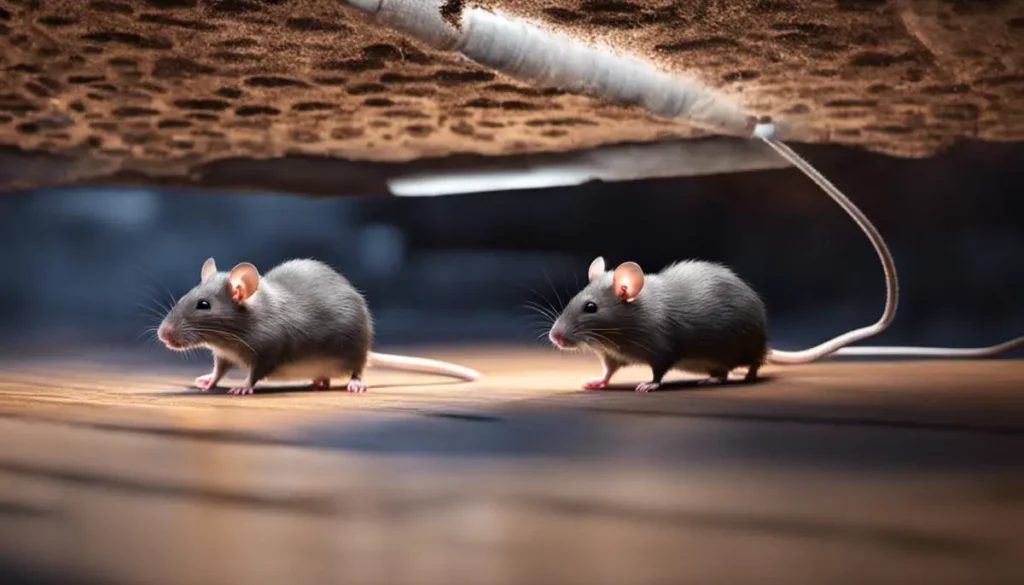
Behavioural traits and patterns suggestive of rat infestation
Beyond the clear physical indicators and sound signatures of rat activity, a deeper understanding of their distinctive behavioral patterns can greatly aid in their early detection, potentially mitigating the substantial damage they are invariably capable of inflicting.
Rats are social creatures, generally exhibiting something akin to group responsibilities within their colony structure. For instance, certain rats in the colony are typically assigned sentinels, purposefully stationed to alert of approaching danger. Researchers have found that these sentinels often exhibit a unique body language – they stand on their hind legs, engage in nose-up posturing, and are generally more vigilant than other rats. Keen observation for rats exhibiting this sentinel behavior may suggest a nearby infestation.
Equally, rats often demonstrate what is called thigmotaxis — an instinctive behavioral response to physical contact or proximity to surfaces. This explains why rats typically run alongside walls or objects, rarely venturing into open spaces. Detection techniques that leverage this knowledge, such as placing traps or tracking powders along the edges of walls or other surfaces, can significantly increase their efficiency.
Furthermore, rats are known for their grooming behaviors, which they engage in multiple times a day, particularly after feeding or when approached by other individuals. Accumulated signs of grooming, such as grease marks on surfaces where they rub their fur or an unusual accumulation of dirt or debris (suggesting a grooming site), can be key indicators of a proximate infestation.
In addition to these patterns, rats also exhibit hoarding behavior. They are known to stockpile food, especially when it is abundant, to provide for leaner times. Unexplained piles of foodstuff or shiny objects (as some rat species are particularly attracted to shiny items) may indicate a rat’s stash and point toward a nearby colony.
Subtle signs like the synchronicity of sightings (since rats frequently follow each other’s scent trails), combined with visual signs of foraging such as gnawed food packaging, can also suggest an active infestation.
Directional scratches on surfaces also hint at the rat’s pathway; scratches going in one direction often indicate a food source, while those in both directions suggest a nesting site.
Crucially, the integration of these behavioral cues within the broader context of physical presence (droppings, gnaw marks, distinctive noise) enhances the precision and efficiency of infestation detection. Recognizing not only what rats do but also why they do it harnesses the full power of interdisciplinary insight to deliver more effective solutions to the perennial challenge of rat infestations. Rat behavior is complex and multifaceted, and every observation can be a piece of a larger puzzle leading to their accurate detection.
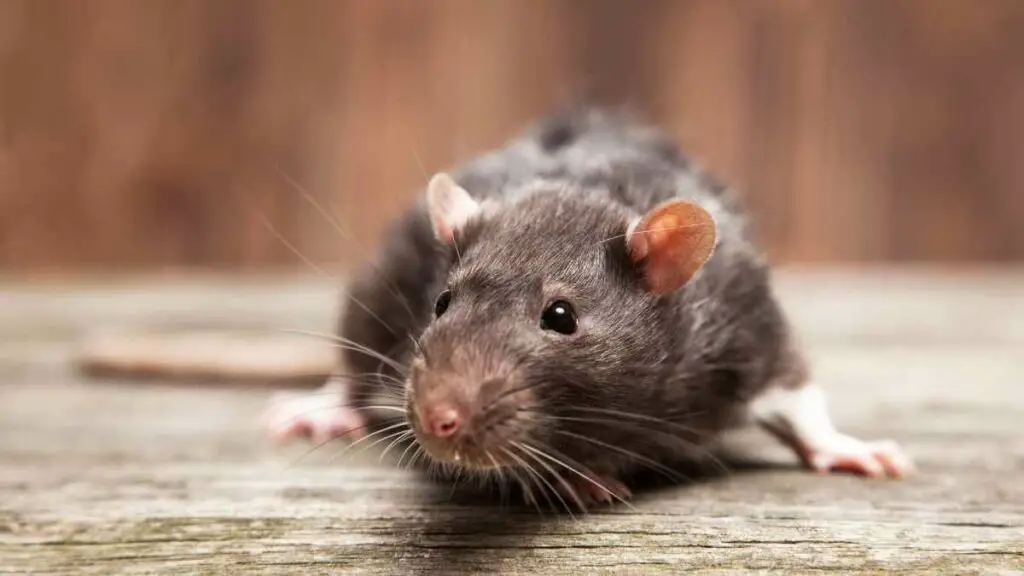
Understanding the biological ramifications of rat infestations
Shifting the spotlight from the aforementioned signs of rat infestations, it is worthy to delve into the biological consequences a rat infestation can potentially precipitate. As we delve deeper into this inspection, it becomes evident that the impact of these creatures transcends structural inconveniences, ramping up to severe biological quandaries that could significantly compromise human health.
At the forefront of these biological consequences lies the potential for disease transmission. Like many other rodents, rats can harbor many pathogens responsible for diseases such as Leptospirosis, Hantavirus, and Plague, among others. The transmission of these diseases from rats to humans can occur through direct contact, such as bites or scratches, or indirectly through exposure to contaminated urine, feces, or rat-infested environments. This factor underscores the importance of seeking professional services immediately upon detecting signs of rat activity.
Moreover, fleas, ticks, and mites, the parasitic acolytes often hitching a ride on rats, further compound the disease transmission risk. Studies reveal that the Oriental Rat Flea (Xenopsylla cheopis), in particular, is infamous for being the vector of bubonic plague, historically known as the Black Death. This serves as a stark reminder of the gravity rat infestations can bear upon human communities.
Additionally, rat infestations can also act as the catalyst for allergic reactions. Specifically, Rat Urinary Protein (RUP), the major allergen in rat urine, has been found to be responsible for hypersensitivity reactions in individuals, manifesting as asthma or allergic rhinitis. These symptoms may escalate to severe respiratory distress if left unmanaged, emphasizing the critical nature of rat infestation management in safeguarding public health.
What’s more, the large-scale breeding and rapid reproduction capability of rats further exacerbate the issues mentioned above. With a gestation period of roughly 21-24 days, an unchecked rat population can skyrocket within weeks, rapidly escalating the health burden.
Finally, the psychological and social implications of rat infestations cannot be glossed over. The mere presence of rats in a living or working space can induce significant distress and anxiety, coupled with potential social stigma and isolation.
In light of these facets, it is evident that rat infestations present complex, multilayered problems that encompass a broad spectrum of biological consequences beyond the visible surface. It underscores the imperative for prompt, comprehensive intervention strategies residing within the domain of professional pest control services that attend to both the symptoms and the root cause of the problem, ultimately preserving the sanctity of our living and working environments.

Proactive measures and treatments for rat infestation
Rats, as intelligent and adaptive creatures, are not easily deterred. Once these flexible mammals find a food source and safe surroundings, they establish their population. Thus, a proper understanding of remarkable rat intelligence proves crucial in comprehending, preventing, or mitigating infestations. Rattus’ spatial cognition—the ability to remember and navigate through complex environments—facilitates rapid accommodation to new regions. This impressively high-functioning spatial learning and memory system dwindles the chances of trapping rats effectively using standard methods.
Risk aversion forms another striking feature of their behavior. These creatures fear new objects, known as neophobia, which may limit the effectiveness of using traps or bait. Subsequently, innovative mitigation methods are necessary that take this cautiousness into account. Further, correct placement and installation of traps play an instrumental role, and employing professionals well-versed in the psychologies of rat populations expedites infestation control measures.
Rats are social animals, and the establishment of territories and social hierarchies highly influence their eating and mating behaviors. Dominant males reproduce frequently and enjoy receptivity from multiple female partners migrating into their territories. This social structure contributes to their explosive population growth, where a single pair breeds up to 2000 offspring in 12 months under ideal conditions. Therefore, early detection is advantageous in preventing population metastasis.
Improved sanitation and cleanliness is another pivotal tactic in preventing infestations. Merely eliminating open food sources and clutter significantly eradicates potential nesting places, thereby making any environment uninviting for rats. Given their impressive gnawing ability—a survival mechanism employed by rats to maintain their continuously growing incisors—maintenance of the structural integrity of premises is essential. Preventative measures such as securing gaps and crevices, using gnaw-proof building materials, and rodent-proofing doorways superbly function to thwart their entry attempts. Wire mesh and metallic sheaths have been proven effective deterrents.
Integrated Pest Management (IPM) philosophies advocate incorporating preventive measures along with control techniques for comprehensive rat infestation management. Strategies focus on inspection prevention through sanitation and rat-proofing, followed by appropriate trapping and baiting wherever necessary. If infestations persist, pesticides with minimal environmental impact are used as the last resort.
Understanding the zoonotic diseases caused by rats emphasizes the importance of intervention. Kendall’s Tau, a rat infestation index, has proven useful in quantifying infestation levels based on observed indices. Ultimately, the factors of various environmental, biological, and behavioral aspects contribute to models that predict successful outcomes of intervention strategies. While there is a notable reliance on professional pest control, studying and understanding rat behavior can significantly enhance mitigation effectiveness. Collaboration between pest management professionals and the public yields the best results. Ultimately, shared responsibility and active participation are key to achieving a rat-free environment.
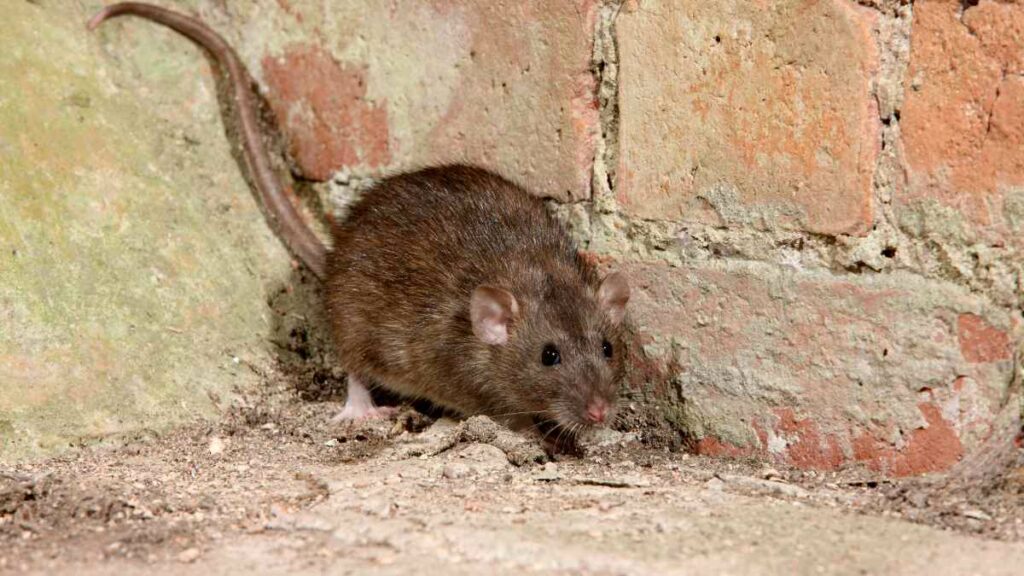
A rat problem is not one that you need to tackle alone or without foreknowledge. Being well-informed on the signs of rat infestation, their behavior, and the implications they carry is half the battle won. Empowering yourself with these pointed strategies in recognizing the invader marks the first step toward a rat-free environment. The information outlined above includes both reactive and preventative treatments that are designed to keep rat infestations under control.
You must take it upon yourself to protect your home and health from these unwelcome invaders. The essential thing to remember is that knowledge, deployable in the correct manner, is the best first line of defense against any rat infestation.

